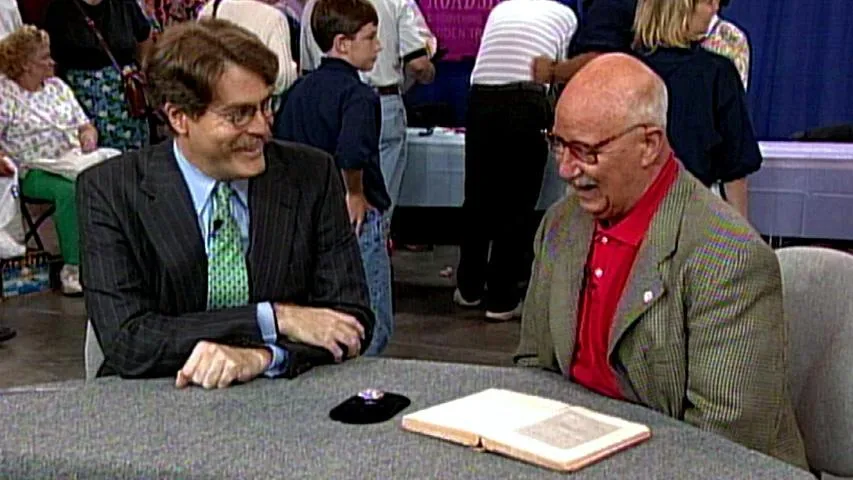GUEST: This is a watch that I fell in love with 35 years ago because, as you can see, it's a hexagram-- you know, a six- pointed star watch-- and I felt that I had to have it. I have a statement from the Metropolitan Museum of Art saying that they did auction it off-- you know, they have to raise money from time to time. I believe that this was originally presented by J.P. Morgan. He was a fantastic watch collector. They decided to auction it off, a dealer bought it--a very prominent dealer-- and when I saw it, I fell in love with it so I paid what was a lot of money in those days.
APPRAISER: How much was that?
GUEST: Three hundred ten dollars.
APPRAISER: Wow. What remains of the Morgan collection is still there in the Met.
GUEST: Oh, a huge collection.
APPRAISER: And it's wonderful stuff, wonderful stuff. And these watches always fascinate me. This was a French watch, maybe in the Renaissance style, maybe about 1800. And this is a standard textbook on watches. Now, over the years I've seen a lot of watches like this. People collected Renaissance-style things at the end of the 19th century just the way people collect, let's say, Tiffany or Art Deco today. But back then, when that book was written, they really didn't know what these watches were. First of all, you said it's in a form of a six-pointed star.
GUEST: Correct.
APPRAISER: It's also rock crystal. And it opens up and we see the inside of the watch, all enamel. We can open it up further... there we go. And if we looked at that movement, we would see that there was a French name on it. But in point of fact, this isn't a French watch. It is actually Viennese.
GUEST: Oh!
APPRAISER: And if we close the watch up and look very closely at the pendant here, you will see the initials H.B.
GUEST: I never saw it. Hermann Boehm, who was a very famous Viennese jeweler who specialized in making recreations, we call them, of Renaissance jewels. And these in and of themselves right now are collected as essentially reproductions. There weren't enough genuine watches to satisfy J.P. Morgan, so there were reproductions made. And this was made in Vienna probably in the 1870s to recreate a Renaissance watch, and it even fooled the experts in the book. Even so, watches like this today if you went out to buy one, I think you did very well. The cloisonnè work is really quite artistic. I think that... it's something I'll keep.
APPRAISER: Oh, I think you will. You could spend perhaps $2,500 to $3,000 trying to replace this watch. I think you did really well.
GUEST: And probably will go to one of my grandchildren.
APPRAISER: I know the dealer that you bought it from. Very few people got the better of him. You did quite well.
GUEST: Thank you.











